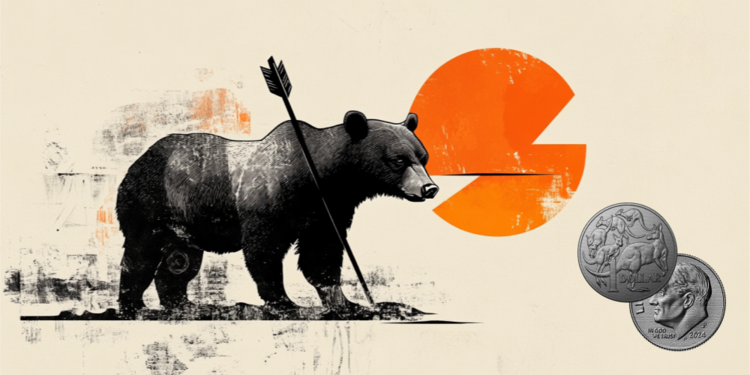Crystal Palace Park in south London still houses the world’s first dinosaur sculptures. They were created in the 1850s based on what were, at the time, very recent scientific discoveries: fossils, unearthed in England just a few decades earlier.
Scientists struggled to understand the creatures, and the sculptures were the first attempt to visualize them in full size. They were portrayed as giant, mammal-like, heavy-bodied, quadruped beasts – an idea already revolutionary compared to previous ones, which imagined dinosaurs essentially as huge lizards. But it was so wrong.
We now know that dinosaurs looked nothing like the scaly versions of the Crystal Palace. For decades, however, the sculptures, as well as many other representations that followed, imprecisely influenced the public’s view of these extinct giants. Renowned paleontologist Michael Benton’s new book, “Dinosaurs: New Visions of a Lost World” offers the latest interpretation.
“It’s the first book on dinosaurs where dinosaurs really look like they were,” says the author, who worked with paleoartist Bob Nicholls to bring the creatures to life. “Every detail, as far as possible, is justified by evidence. We try to choose species that are well documented, so that in the text I can indicate what we know and why we know it”.
Much of the evidence comes from the most recent fossil discoveries in China, which, starting in the 1990s, have changed the way we interpret how dinosaurs look. The 1996 discovery of a feathered fossil in Liaoning Province, for example, created a direct connection between dinosaurs and birds.
“I think we can say that feathers originated much earlier than we thought, at least 100 million years earlier, so right at the root of dinosaurs,” said Benton.
The idea that dinosaurs have feathers didn’t appeal to everyone. Notoriously, the “Jurassic Park” franchise – which debuted in 1993 before the discovery of the feathered dinosaur fossils – has vehemently refused to include them in its most recent films.
“They characterize this by saying they don’t want the T-Rex to look like a giant chicken. But it’s a shame,” Benton said.
Even more recently, Benton and his team at the University of Bristol in the UK have pioneered in some ways, finding pigment structures embedded in fossilized feathers to identify a dinosaur’s color patterns from fossils. “We were the first to apply this method in 2010, so the book is mainly documenting studies over the past 10 years that have looked at skin, scales and feathers in fossils – to get the color.”
This result is shown through illustrations of the 15 creatures featured in the book – not just dinosaurs but also prehistoric birds, mammals and reptiles – adorned with vibrant fur patterns, an abundance of multicolored feathers, and some with striking iridescent heads .
Looking at these creatures shows how much our knowledge of dinosaurs has improved and how much can be improved. “A few years ago, I thought we’d never know about a dinosaur’s color, but now we do,” Benton said.
“Don’t set limits, because sooner or later, a smart young man will say, ‘Hey guys, we can really work this one out.’”
Add to queue: Dino-mania
- Leia: “The Rise and Fall of the Dinosaurs” (2018)
If you want to know the whole history of dinosaurs, look no further than this “dinosaur biography” written by one of the world’s greatest paleontologists, Steve Brusatte. The book chronicles the 200-million-year history of dinosaurs, from the Triassic, through the Jurassic and into the Cretaceous, when the species ended through a mass extinction caused by a comet or asteroid. Narrated as an epic saga that illustrates the modern workings of paleontology, it is based on very recent research.bz
- Assista: “Walking with Dinosaurs” (2000)
This classic documentary series, produced by the venerable BBC Natural History Unit and shown by Discovery in the United States, had the distinction of being the most expensive documentary ever made when it was released in 1999. It won three Emmys, generated two sequels and portrayed dinosaurs in their natural habitats – in true documentary style – using a mix of computer graphics and animatronics. It was cutting-edge for its time and still has a lot of educational and entertainment value, although some of the science is out of date.
- Watch: “Dinosaur 13” (2014)
This blend of paleontology and political drama is woven throughout the story of Sue, the largest and most complete T-Rex skeleton ever found. After being unearthed in South Dakota in 1990, the fossil has become the center of a years-long legal battle over its ownership, illustrating the fissures that can arise between paleontologists, fossil collectors and governments that own the land on which the fossils are. found. Spoiler alert: Sue is now on display at Chicago’s Field Museum of Natural History.
- Listen: “I know Dino” (2016 in progress)
The favorite podcast for dinosaur lovers, “I Know Dino”, is directed by Garret Kruger and Sabrina Ricci, a couple of dinosaur enthusiasts. Each hour-long episode focuses on a species, which is discussed and explored in detail with the help of the guests. The podcast, which started in 2016, is already approaching 400 episodes.
- Watch: “Jurassic Park” (1993)
This Steven Spielberg classic is still the popular culture reference point for dinosaurs. It was the first movie to portray them as intelligent, dynamic and fast-moving creatures. (Who could forget the famous scene with the T-Rex fighting the Velociraptors?) Though it was made nearly 30 years ago, the film’s CGI still stands up to scrutiny. Scientific accuracy has diminished over the years, but it’s still a fun movie to watch, with starring performances by Laura Dern, Sam Neill and Jeff Goldblum.
* (Translated text. Click here to read the original).
Reference: CNN Brasil
I’m James Harper, a highly experienced and accomplished news writer for World Stock Market. I have been writing in the Politics section of the website for over five years, providing readers with up-to-date and insightful information about current events in politics. My work is widely read and respected by many industry professionals as well as laymen.







